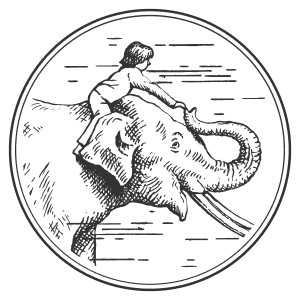/--/uploads/2024/02/ILLUS_WEBSITE_TERREORIGINES_20181019_V04b-e1708094377769.jpg)
Africa, cradle of our civilisation.
The Land of Origins immerses visitors in the heart of the African continent, where one can observe the Big Five, but also klipspringers, Western lowland gorillas, lemurs, and scimitar-horned oryxes. Within this world lies the refuge of the Pairi Daiza Foundation, which shelters thousands of abandoned or seized reptiles and amphibians.
Animals in the Land of Origines
- The common Hippopotamus
The common hippopotamus or “hippo” is, with the dwarf hippopotamus, the last representative of the hippopotamidae family. It differs from its cousin by its much larger size (up to 4 metres long) and its considerable mass (4 tonnes for the largest individuals).
The common Hippopotamus - White Rhinoceros
This is the second largest land mammal after the elephant. It can weigh up to 3 tons and be 4 metres long. It lives mainly on the savannas of Southern Africa because the Central African subspecies has virtually disappeared.
White Rhinoceros - The giraffes
The name of this animal comes from the Arabic “Zarafa”, meaning “the charming”! As for the scientific name camelopardalis, it comes from the ancient belief that the giraffe was the result of a cross between a camel and a leopard. Nowadays, giraffes only live in Africa, but many millennia ago they also inhabited China and Southern Europe.
The giraffes - Western lowland gorilla
The western lowland gorilla is an impressive primate which lives in tropical rainforests and wetlands, up to 1,300m in altitude, on the Atlantic side of central Africa. It is a quiet animal that is only aggressive when it is disturbed or threatened.
Western lowland gorilla - Cape Buffalo
Widespread in East and South Africa with currently nearly 300.000 animals, this species is not endangered in the wild. Large buffalos can weigh about 1000 kg and are renowned for their hot temper: as one of the “Big Five” it is also called “Black Death” and “Widow-maker”. In southern Africa, this buffalo is widely regarded as a very dangerous animal, as it gores and kills over 200 people every year!
Cape Buffalo - The Shoebill
With its round little eyes and its vaguely ironic air when it stares at you, completely motionless, this large wader bird, of a pearl-grey colour, is rather related to herons and pelicans than to storks, with which it shares the silhouette, however. It is its beak which is especially remarkable : in the shape of a 25cm-long and 10cm-wide shoe, hence its so evocative local name : “ abou marqoub ”, Father of the Shoe!
The Shoebill - Cheetah
This elegant, long-legged feline is a champion: it is the fastest mammal in the world, capable when hunting, particularly gazelles, of amazing accelerations, of zigzag running and of bursts of speed of 110 kph. But it is not a long-distance runner.
It has claws like all large cats but it is the only one which cannot retract them.
Cheetah - Oryx Scimitar
This antelope species has been extinct in the wild since the 1970s-80s and now only survives in various zoos and private parks around the world. Reintroduction projects are underway in reserves located in its original habitat, particularly in Chad.
Oryx Scimitar - Ring-tailed Lemur
This lemur, weighing between 3 and 4 kg, has a long characteristic tail with 14 black rings, which it uses not only when it moves through the trees but also to send visual signals to other members of the group, according to the way it makes it move.
Ring-tailed Lemur - The African Lion
When it fixes you with its golden eyes, exuding power and majesty, one understands why it has been regarded as the King of the Animals. It is the largest of the felines, a large male being able to weigh up to 250 kg. The lioness is smaller but livelier, capable of running very quickly, and therefore it is above all she which hunts in order to feed the family.
The African Lion
/--/uploads/2024/02/MI4A7529.jpg)
/--/uploads/2024/02/Galina_MI4A0146-e1708420572317.jpg)
/--/uploads/2024/02/BEN_8206-1-e1708100092793.jpg)
/--/uploads/2024/02/MI4A6552-e1708098545704.jpg)
/--/uploads/2024/02/shutterstock_8335945-1.jpg)
/--/uploads/2024/02/MI4A8287.jpg)
/--/uploads/2024/02/MI4A5140-e1708331564570.jpg)
/--/uploads/2024/02/0C5A6808-e1708331693791.jpg)
/--/uploads/2024/02/MI4A3396-e1708332423112.jpg)
/--/uploads/2024/02/Galina_MI4A0730-e1708332112210.jpg)
Not to be missed during your visit
Projects by the Pairi Daiza Foundation
Pairi Daiza and its Foundation have a mission to protect, preserve, and save the wonders of nature.

/--/uploads/2023/12/app-store.png)
/--/uploads/2024/02/google-play.png)
/--/uploads/2025/02/SITE_Header-2048x1071_Mix-EN.jpg)

/--/uploads/2024/02/DSC02569-e1708338851267.jpg)
/--/uploads/2024/02/Village-de-Tembera-Monique-Morue-3-copie.jpg)
/--/uploads/2024/02/0C5A7783-e1708338650649.jpg)
/--/uploads/2024/02/JACK-BUNIA-rehabilitation.jpg)
/--/uploads/2024/02/20230924_133201.jpg)
/--/uploads/2024/03/DSC04886-1.jpg)
/--/uploads/2024/04/hero-world.jpg)
/--/uploads/2024/01/Large-JN-Morse-ProPhotoRVB-6-e1718622658676.jpg)
/--/uploads/2024/02/app-store.png)